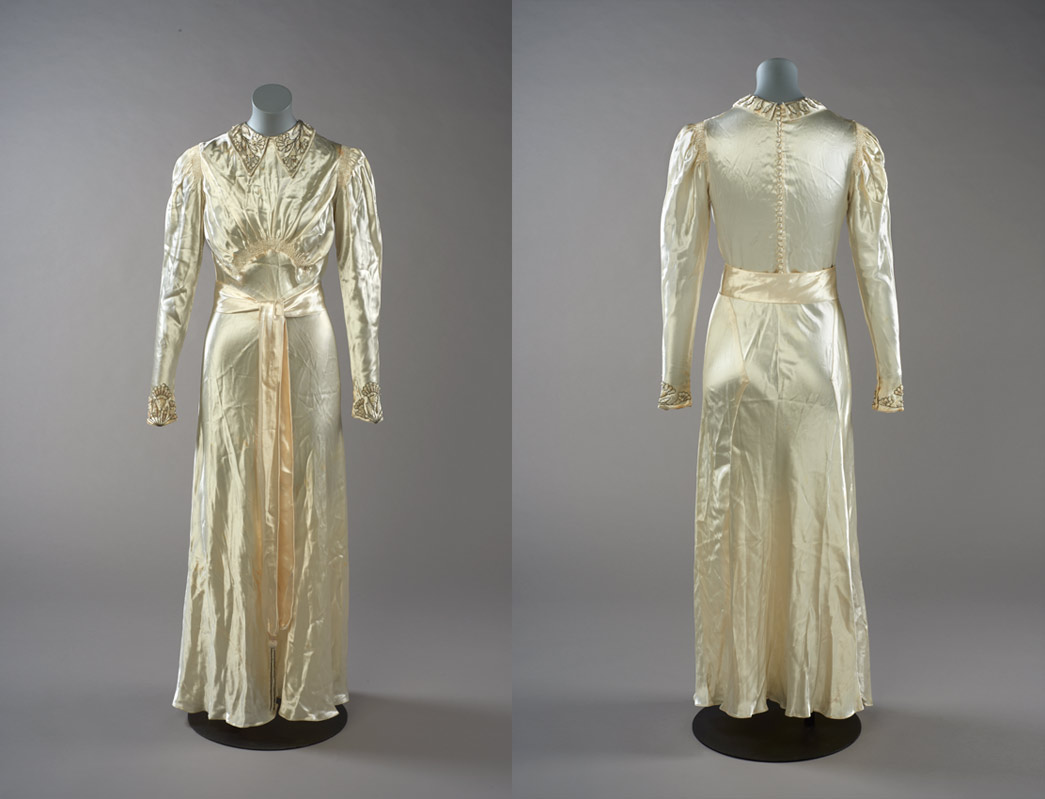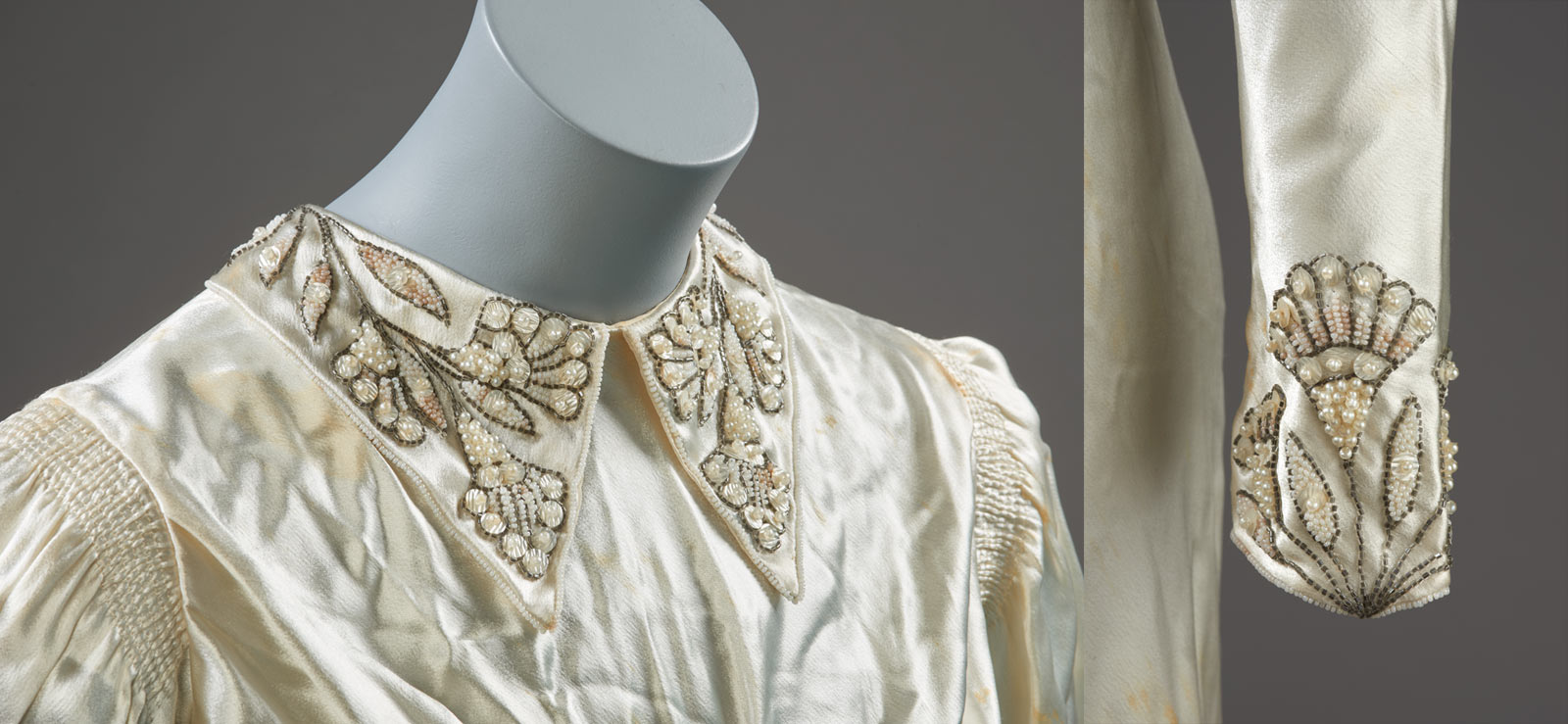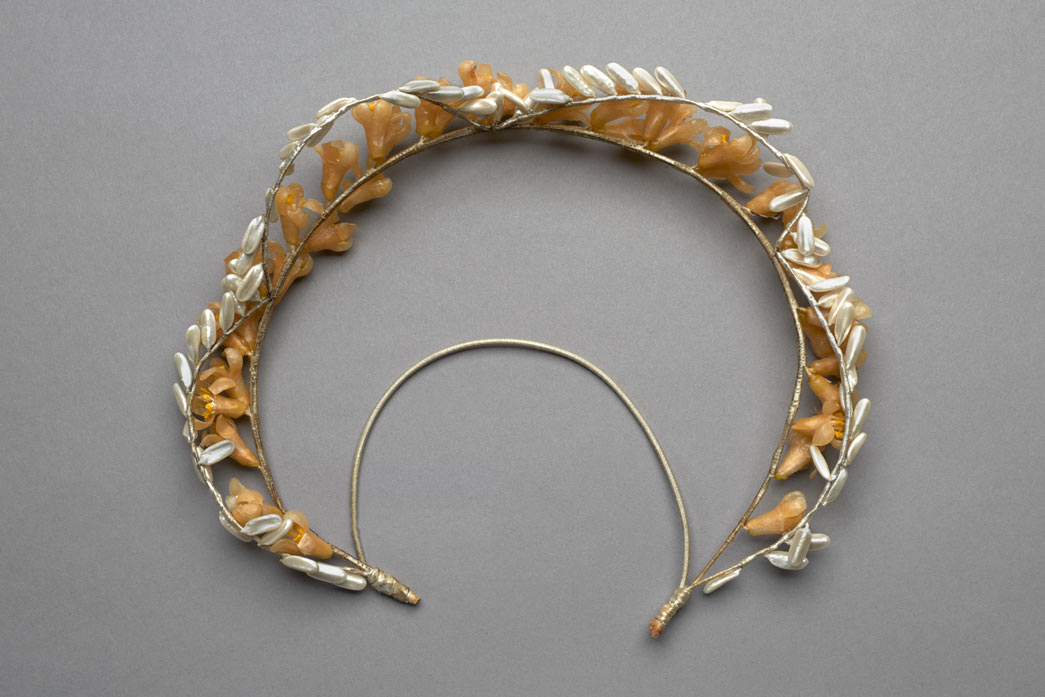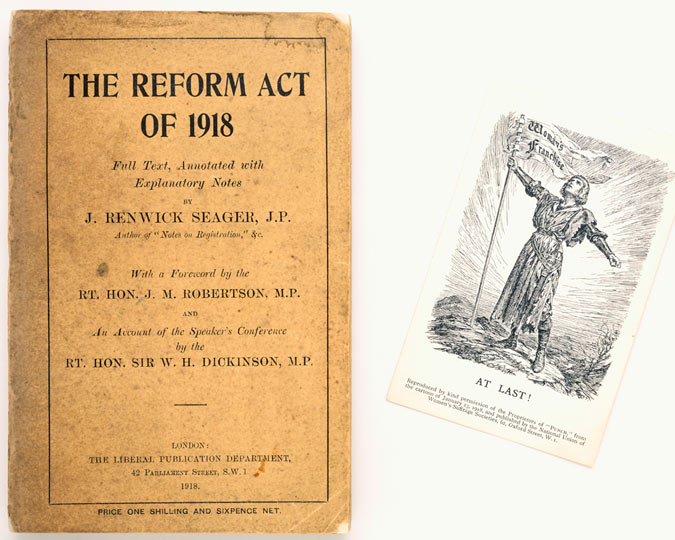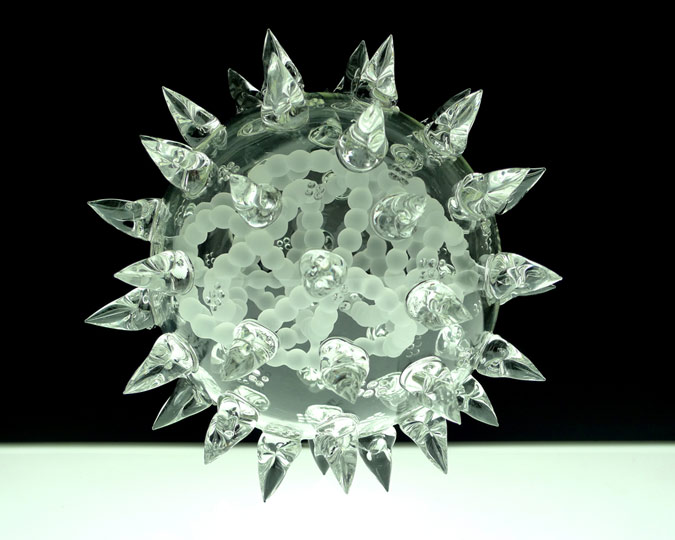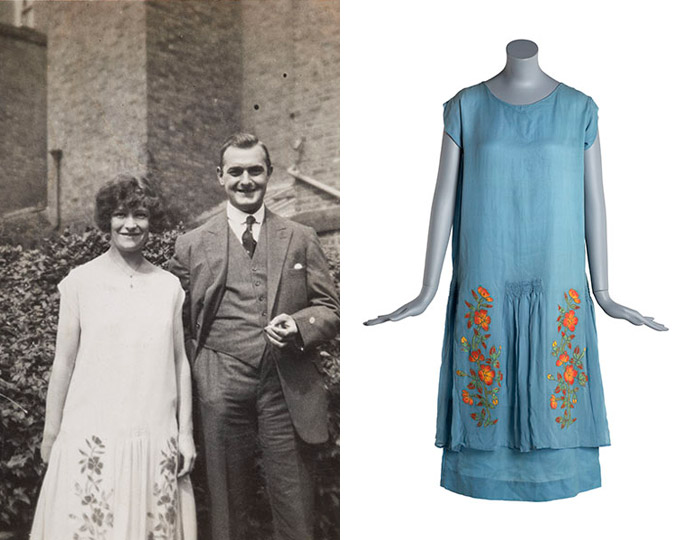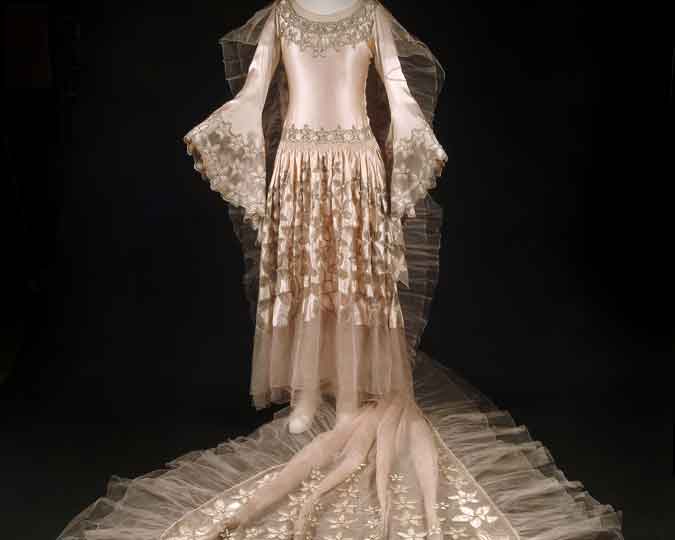Our 2018 Collecting for London display included a wedding dress, made in the 1930s. This unassuming vintage dress holds a fascinating story: that of the five women who wore it to get married, in the austere London of the Great Depression and the Second World War.
On 21 August 1938, in the church of St John the Evangelist, Palmers Green in north London, Elizabeth Amelia Katherine Marner was married to James Albert Wray. The bride wore a beautiful, off white satin gown, which is now preserved in the Museum of London together with its intriguing story.
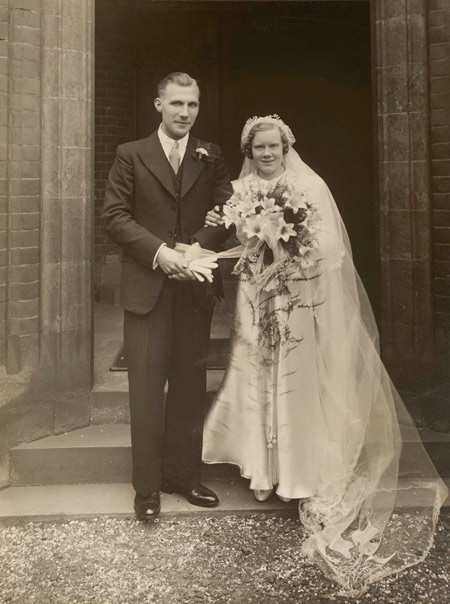
Both bride and groom were born in East London within a year of each other: Elizabeth in 1914 in Hoxton, part of the borough of Hackney, and James in 1915 in Islington. Betty and Jim, as they were known, had met at a friend’s house when they were nineteen. They had ‘courted’ for four years before they could marry.
Elizabeth had taken care of her three younger siblings after the death of her mother in 1926. Being a clever girl, she would have preferred to stay at school but her father, a ‘packing case maker’ wanted her to start working at 14. When Betty met Jim, she was in service to a Methodist minister and his wife, a lived-in position which she left a few weeks before the wedding. Jim had joined the Post Office as a messenger boy in 1929 and after a stint as a postman, he had become a General Post Office Sorter.
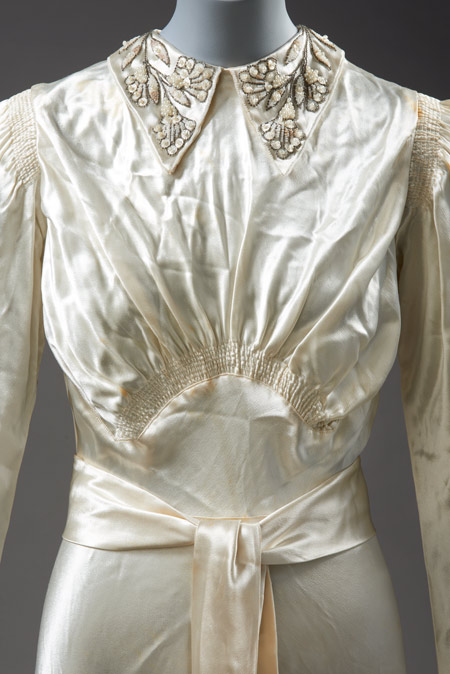
The wedding dress bodice
Like many brides of modest means, Betty sewed her own wedding dress, probably using a commercial pattern. The high sheen of the dress fabric suggests that it is woven of artificial silk. This had started to be produced at the end of the previous century. In May 1896 The Times had still called ‘the manufacture of silk out of wood pulp’, or cellulose, ‘a new industry of a character so novel that the mention of it may appear to be suggestive on an absurdity rather than of sober truth’. By the 1930s ‘art silk’, as it was often called, was commonly used, often for underwear but also, as here, for dresses.
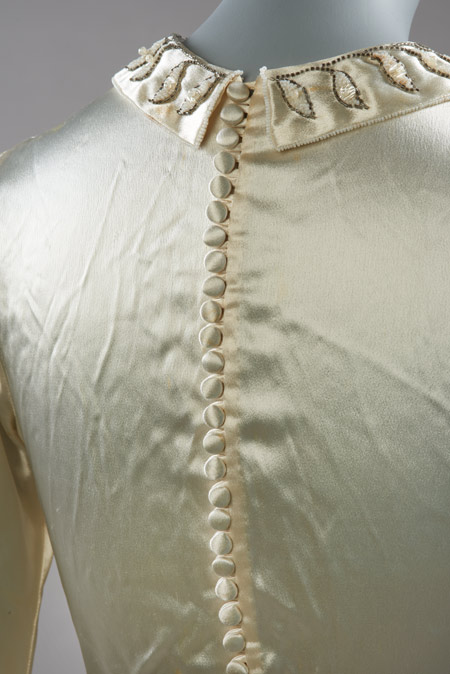
Betty applied her smocking skills to gather the fullness of the material underneath the bust and at the top of the sleeve, the latter giving the dress the fashionably wide-shouldered look. The long row of fabric-covered buttons at the back were another nod to contemporary style.
The collar and above the hem of the sleeves are both embroidered, using small white pearls, textured spangles, pearlised and grey (possibly tarnished silver) bugle beads. This was not Betty’s own work but that of her cousin Dorothy May Tombs (1914-1984).
Dorothy was employed as a bead worker at the London couture house of Norman Hartnell, who famously designed both the Queen’s wedding and coronation gowns. Presumably, Dorothy was also responsible for the beaded tassels attached to the ends of the sash. If you look closely at the wedding photograph, you can see that Betty’s veil is embroidered around the edges and has appliqued satin leaves in the corners, maybe also Dorothy’s work?
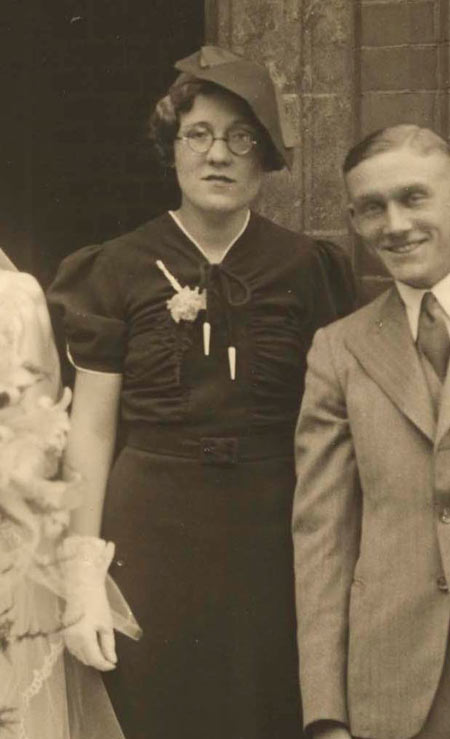
Dorothy Tombs
Dorothy and her mother Emma Tombs (1875-1968) both attended the wedding. I think you can tell straight away that Dorothy is involved in fashion. I love the jaunty angle of her hat, the cut of her dress - particularly the white piping around the neck and the short sleeves - the white (or metal) points at the ends of the neck bow, her brooch (even if it clashes somewhat with her corsage) and the white gloves. I also like that Dorothy, like her mother, is wearing glasses, something you do not often see in photographs.
The other wedding guests were best man Ernest Goldstein (let us know if you know more about him), standing on Emma Tomb’s right and Betty’s brother Henry (Harry) Arthur Marner (1916-2001), both wearing the wide-legged trousers en vogue at the time.
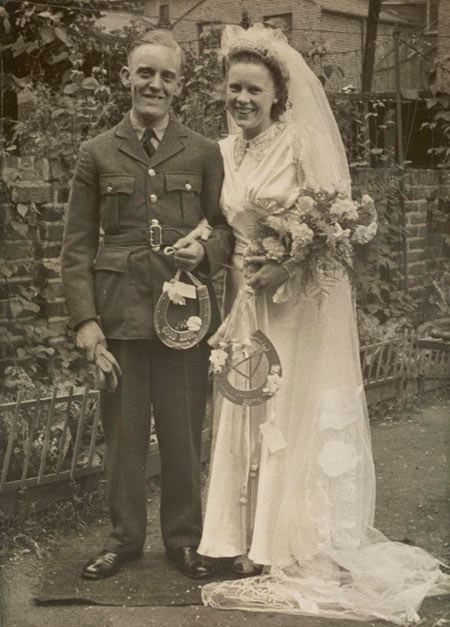
It's not only its connection with London's couture houses that makes this dress stand out to me. It also had the distinction of being worn to four more weddings, each by a different bride. Reusing wedding dresses was not uncommon in the 1930s and 1940s, given that first the Great Depression and then the Second World War forced austerity on Britain. Betty lent out her wedding dress to two of her coworkers between 1939 and 1942.
The third of the borrowing brides was Betty’s younger sister Lillian (Lily, 1923-1979) who married Robert George Murray (1920-1994) in Stoke Newington in September 1942, despite her father objecting to the marriage twice. Maybe Lily found it hard to find sufficient fabric during the war, or maybe she just liked the dress. As you can see, massive bouquets of flowers are still all the rage in 1942 and so, it seems, are giant horseshoes- for the luck of the newly married couple.
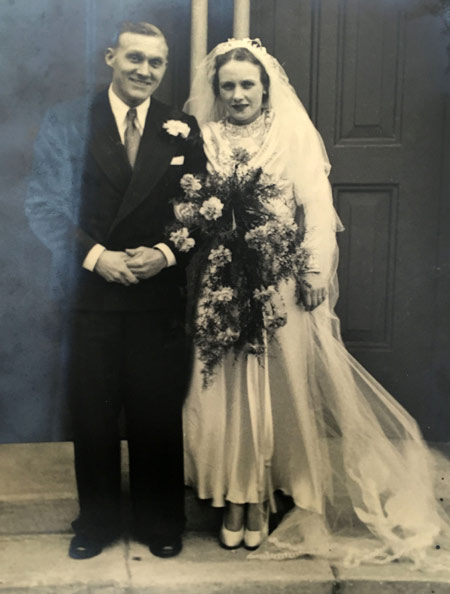
Moyra Farr gets married, 1947
Finally, the fifth bride, Moyra Farr (1922-1990) borrowed the dress when she married Betty’s brother Harry in Uxbridge, west London in 1947.
Unfortunately, we do not know the names of the other two brides, the second and third women to borrow the dress. During the Second World War, James – the first groom – was in the postal section of the Royal Engineers while Betty worked at Mount Pleasant post office until she had her first child in November 1942. Some time between 1939 and 1942 Betty lent her dress to two work colleagues. Please get in touch if you know who they are! Perhaps you recognise this dress from a family photograph, or know that one of your relatives worked in the Post Office and got married during the Second World War?
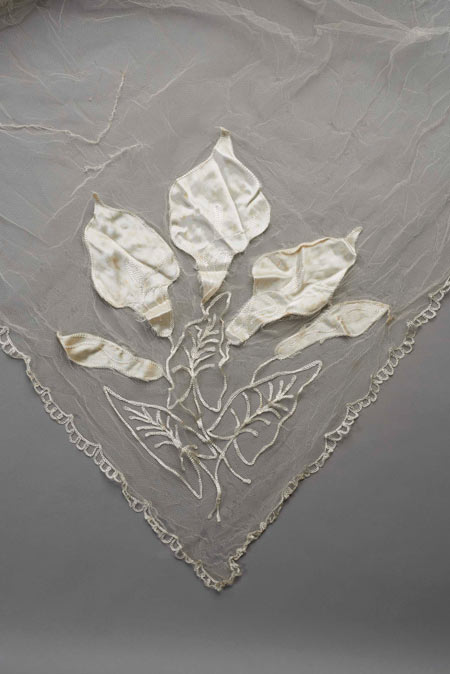
Silk tulle wedding veil
I am amazed that the fragile silk tulle veil survived five weddings and a further 70 years. The dress and veil were donated in 2016 by Betty and Jim’s two daughters, together with a wax orange blossom wreath. These had been fashionable at least since Queen Victoria had worn a wreath made out of real orange blossoms to her own wedding in 1842.
In case you are wondering what happened to Betty and Jim. Apart from a short period during the war, when Betty moved to a maternity home in Oxford to escape the London bombings, they continued to live in London, buying a house in South Ruislip just before the end of the war. Jim continued to work for the Post Office, later moving into telecommunications, while Betty went back to work part-time in the 1950s as a canteen worker at weekends. After Jim’s retirement, in 1975, the couple moved to the Isle of Wight where they celebrated their diamond (60th) wedding anniversary in 1998. Jim died the same year, Elizabeth in 2000.
Love fashion? Subscribe to our fashion newsletter to read more stories from our collections, and see upcoming events and exhibitions.









